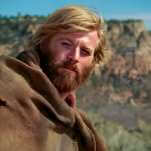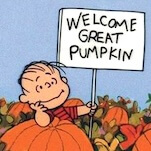Time Capsule: Cat Stevens, Teaser and the Firecat
Every Saturday, Paste will be revisiting albums that came out before the magazine was founded in July 2002 and assessing its current cultural relevance. This week, we’re looking at Cat Stevens’ follow-up to his commercial breakthrough, a project with all-time folk-pop classics but whose most popular song was marred by a controversy surrounding its maker in the 1980s.

Long before selling 100 million records, netting over 2 billion streams (“Wild World” and “Father and Son” alone have over a billion) and scoring Harold and Maude, Cat Stevens—born Steven Demetre Georgiou, now known as Yusuf Islam—was a teen performer playing in pubs and coffee houses around London. It was around then, in the mid-1960s, that Stevens abandoned his birth name. “I couldn’t imagine anyone going to the record store and asking for ‘that Steven Demetre Georgiou album,’” he told Salon in 1999. And by the time he turned 18 in 1966, Mike Hurst of the Springfields discovered Stevens and got him a record deal with Deram, an imprint of Decca. His debut album Matthew and Son, hit #7 on the UK Albums chart, the title-track went all the way to #2 and “I’m Gonna Get Me a Gun” soared to #6. The non-single “Here Comes My Baby” remains a staple of baroque pop history.
Around that same time, Stevens was playing shows with everyone from Jimi Hendrix to the Spencer Davis Group to the Small Faces. His sophomore album, New Masters, failed to chart—despite containing the now revered classic “The First Cut is the Deepest,” which has been covered by Rod Stewart, Sheryl Crow, P.P. Arnold and many others (and would nab Stevens a Songwriter of the Year ASCAP award in both 2005 and 2006, over 40 years after demoing the song for the first time). After contracting tuberculosis in 1969 and nearly dying from it, Stevens started gravitating towards spirituality—taking up meditation and exploring metaphysics. During his recovery and spiritual awakening, it’s been said that he wrote over 40 songs. Deram Records dropped Stevens from his contract, which allowed him to ink a deal with Island Records after fascinating founder Chris Blackwell away during an audition.
Few folk singer-songwriters of the era had a two-year period quite as prolific and successful as Cat Stevens had in 1970 and 1971. In April of the former, he put out Mona Bone Jakon, a supremely underrated album that featured one of Stevens’ greatest songs: “Trouble.” The LP charted in the UK, US and Australia and even went Platinum in Germany. It marked Stevens’ first-ever collaboration with producer and Yardbirds bassist Paul Samwell-Smith, and the tracks proved that the Englishman had come a long way from his pub-playing days in London. The work was darker, attentive—giving Stevens crucial separation from his American peers, like Paul Simon and James Taylor. The songs were solemn like Nick Drake’s Pink Moon but polished like Van Morrison’s Astral Weeks—a recipe that would galvanize Stevens’ career in a flash.
Cut to November 1970 and Stevens got his commercial breakthrough: Tea for the Tillerman, the masterpiece that emboldened the singer-songwriter’s musical immortality. And it was a dynamic, sure-fire hit, even though Village Voice dynamo Robert Christgau was lukewarm on the project, citing that the songs lacked the “dry delicacy” of Mona Bone Jakon. But Rolling Stone loved it, and critic Ben Gerson considered Stevens’ songs to “effortlessly resonate beyond their artfully simple lyrics and hooks.” Shouldered by his two most popular songs, “Wild World” and “Father and Son,” Tea for the Tillerman’s legacy was etched in stone. But Stevens had one more masterpiece left in the tank, and it would be his magnum opus: Teaser and the Firecat.
Though Teaser and the Firecat lacks the cultural thunderstorm of a heartaching track like “Father and Son,” the album is far more complete on the whole. It was a far more commercially successful album than its predecessor, peaking at #2 on both the UK and US album charts and hitting #1 in Australia (Tea for the Tillerman only peaked at #20 in the UK and #8 in the US). And, in the States, the album has been certified Platinum three times. If Tea for the Tillerman vaulted Stevens into the echelons of his peers, then Teaser and the Firecat sent him skyrocketing past them all. It’s an album that is on-par, if not better, than something like Sweet Baby James, Bryter Layter or Starsailor; a project that explored Stevens’ pop sensibilities far more than anything he’d done prior, and it showed that the folk troubadour had a bit of a knack for the game.
Teaser and the Firecat kicks off with the greatest sub-two-minute song ever recorded: “The Wind,” which has been featured in films like Rushmore and Almost Famous. It’s a short-but-sweet folk ditty about self-reliance and self-confidence. “I listen to my words, but they fall far below,” Stevens sings atop his own isolated guitar strumming. “I let my music take me where my heart wants to go. I’ve swam upon the devil’s lake, but never, never, never, never. I’ll never make the same mistake.” The song exists as quickly as it came, but “The Wind” gnaws at the beating-heart of Cat Stevens’ ingenue, how he can wrap you around his finger with the same get-up he’d utilize in a coffee shop or on a street corner. “Morning Has Broken,” a Christian hymn from the Great Depression, was composed by Eleanor Farjeon and set to the tune of a Scottish Gaelic song “Bunessan.” Though often sung at funeral services, Stevens’ translation of the gospel song is much less choral—containing a piano arrangement from Yes keyboardist Rick Wakeman and a subtle hue of harmonium from Stevens himself. “Mine is the sunlight, mine is the morning,” Stevens sings. “Born of the one light Eden saw play, praise with elation, praise every morning—God’s recreation of the new day.”
What a song like “Morning Has Broken” captures is Stevens’ ability to make non-secular music accessible to anyone who identifies with any spirituality. The song is a tome in that way, how it praises the art of singing and rejoices at the hope of a new day—rather than let its warmth skew in favor of one denominal pathway. Stevens approaches non-secular standards with a touch of modernity, as if he’s deconstructing the folk songbook and separating it piece by piece. “Morning Has Broken” soared up the charts, too, hitting #6 on the Hot 100 and #9 on the UK OCC—achieving successes similar to that of Norman Greenbaum’s “Spirit in the Sky” and George Harrison’s “My Sweet Lord” the year prior.
-

-

-

-

- Curated Home Page Articles By Test Admin October 21, 2025 | 3:10pm
-

- Curated Home Page Articles By Test Admin October 21, 2025 | 2:57pm
- Urls By Test Admin October 21, 2025 | 2:57pm
- Curated Home Page Articles By Test Admin October 21, 2025 | 2:55pm
-

-

-

-

-

-

-

-

-

-

-

-

-

-

-

-

-

-

-

-

-

-

-

-

-

-

-

-

-

-

-




































